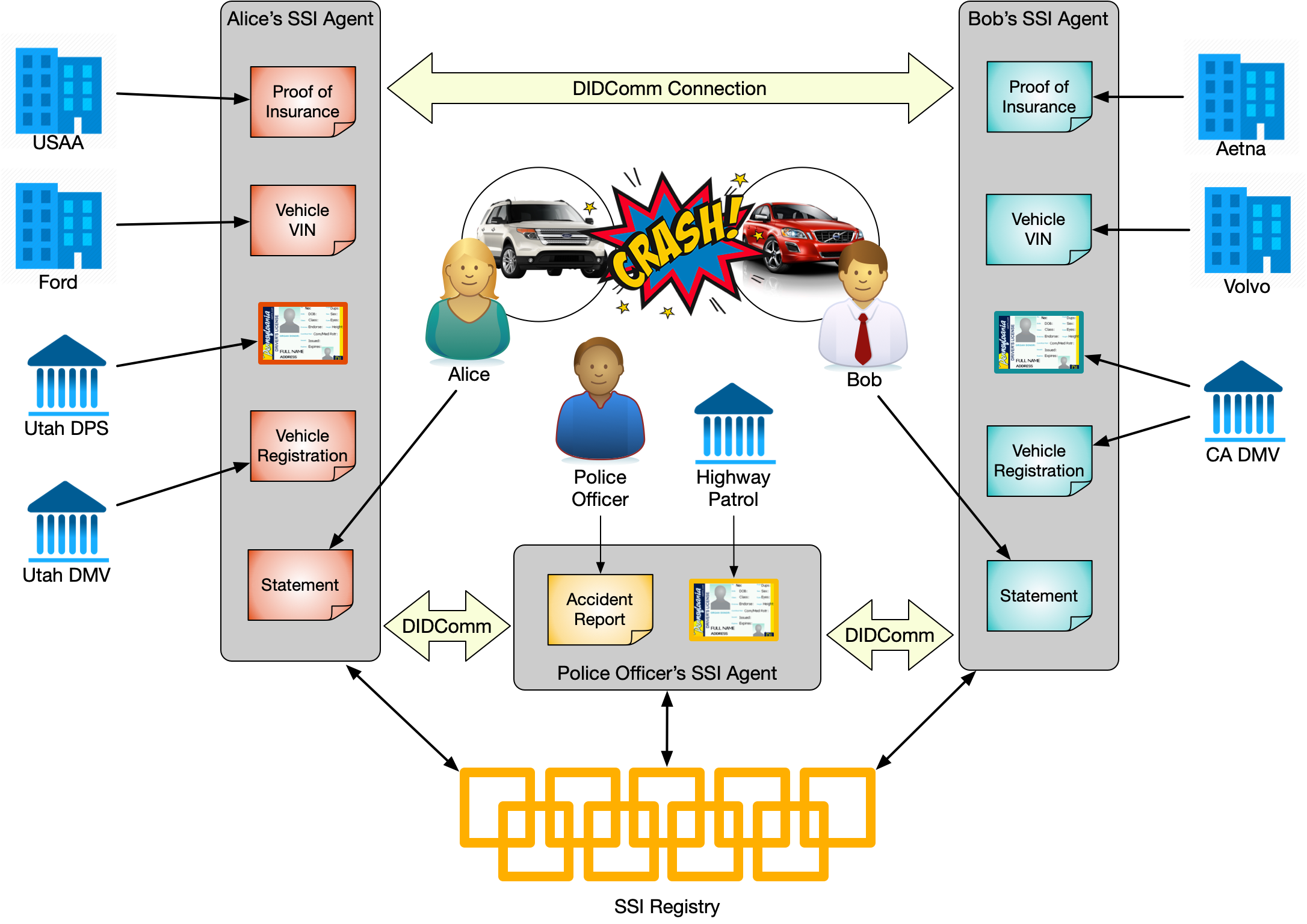Summary
Token-based identity systems move us from talking about who, to thinking about what, so that people can operationalize their digital lives. Token-based identity systems support complex online interactions that are flexible, ad hoc, and cross-domain.

I've spent some time thinking about this article from PeterVan on Programmable Money and Identity. Peter references a white paper on central bank digital currencies and one on identity composability by Andrew Hong to lead into a discussion of account- and token-based1 identity. In his article, Peter says:
For Account-based identity, you need to be sure of the identity of the account holder (the User ID / Password of your Facebook-account, your company-network, etc.). For Token-based identity (Certified claim about your age for example) you need a certified claim about an attribute of that identity.
In other words, while account-based identity focuses on linking a person in possession of authentication factors to a trove of information, token-based identity is focused on claims about the subject's attributes. More succinctly: account-based identity focuses on who you are whereas token-based identity is focused on what you are.
One of my favorite scenarios for exploring this is meeting a friend for lunch. You arrive at the restaurant on time and she’s nowhere to be found. You go to the hostess to inquire about the reservation. She tells you that your reservation is correct, and your friend is already there. She escorts you to the table where you greet your friend. You are seated and the hostess leaves you with a menu. Within a few moments, the waitress arrives to take your order. You ask a few questions about different dishes. You both settle on your order and the waitress leaves to communicate with the kitchen. You happily settle in to chat with your friend, while your food is being prepared. Later you might get a refill on a drink, order dessert, and eventually pay.
While you, your friend, the host, and waitstaff recognized, remembered, and interacted with people, places, and things countless times during this scenario, at no time were you required to be identified as a particular person. Even paying with a credit card doesn't require that. Credit cards are a token-based identity system that says something about you rather than who you are. And while you do have an account with your bank, the brilliance of the credit card is that you no longer have to have accounts with every place you want credit. You simply present a token that gives the merchant confidence that they will be paid. Here are a few of the "whats" in this scenario:
- My friend
- The person sitting at table 3
- Over 21
- Guest who ordered the medium-rare steak
- Someone who needs a refill
- Excellent tipper
- Person who owes $179.35
- Person in possession of a MasterCard
You don't need an account at the restaurant for any of this to work. But you do need relationships. Some, like the relationship with your friend and MasterCard, are long-lived and identified. Most are ephemeral and pseudonymous. While the server at the restaurant certainly "identifies" patrons, they usually forget them as soon as the transaction is complete. And the identification is usually pseudonymous (e.g. "the couple at table three" rather than "Phillip and Lynne Windley").
In the digital realm, we suffer from the problem of not being in proximity to those we're interacting with. As a result, we need a technical means to establish a relationship. Traditionally, we've done that with accounts and identifying, using authentication factors, who is connecting. As a result, all online relationships tend to be long-lived and identified in important ways—even when they don't need to be. This has been a boon to surveillance capitalism.
In contrast, SSI establishes peer-to-peer relationships using peer DIDs (autonomic identifiers) that can be forgotten or remembered as needed. These relationships allow secure communication for issuing and presenting credentials that say something about the subject (what) without necessarily identifying the subject (who). This token-based identity system more faithfully mirrors the way identity works in the physical world.
Account- and token-based identity are not mutually exclusive. In fact, token-based identity often has its roots in an account somewhere, as we discovered about MasterCard. But the key is that you're leveraging that account to avoid being in an administrative relationship in other places. To see that, consider the interactions that happen after an automobile accident.

In this scenario, two drivers, Alice and Bob, have had an accident. The highway patrol has come to the scene to make an accident report. Both Alice and Bob have a number of credentials (tokens) in their digital wallets that they control and will be important in creating the report:
- Proof of insurance issued by their respective insurance companies
- Vehicle title issued by the state founded on a vehicle original document from the vehicle's manufacturer.
- Vehicle registration issued by the Department of Motor Vehicles (DMV)
- Driver's license issued by the Department of Public Safety (DPS) in Alice's case and the DMV in Bob's
- In addition, the patrol officer has a badge from the Highway Patrol.
Each of these credentials is the fruit of an account of some kind (i.e. the person was identified as part of the process). But the fact that Alice, Bob, and the patrol officer have tokens of one sort or another that stem from those accounts allows them to act autonomously from those administrative systems to participate in a complex, ad hoc, cross-domain workflow that will play out over the course of days or weeks.
Account-based and token-based identity system co-exist in any sufficiently complex ecosystem. Self-sovereign identity (SSI) doesn't replace administrative identity systems, it gives us another tool that enables better privacy, more flexible interactions, and increased autonomy. In the automobile scenario, for example, Alice and Bob will have an ephemeral relationship that lasts a few weeks. They'll likely never see the patrol officer after the initial encounter. Alice and Bob would make and sign statements that everyone would like to have confidence in. The police officer would create an accident report. All of this is so complex and unique that it is unlikely to ever happen within a single administrative identity system or on some kind of platform.
Token-based identity allows people to operationalize their digital lives by supporting online interactions that are multi-source, fluid multi-pseudonymous, and decentralized. Ensuring that the token-based identity system is also self-sovereign ensures that people can act autonomously without being within someone else's administrative identity system as they go about their online lives. I think of it as digital embodiment—giving people a way to be peers with other actors in online interactions.
Notes
- I'm using "token" in the general sense here. I'm not referring to either cryptocurrency or hardware authentication devices specifically.
Photo Credit: Tickets from Clint Hilbert (Pixabay)




